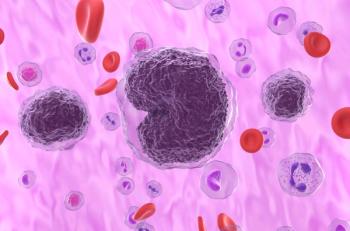
AI-Based Tool for Classifying Acute Leukemia Subtypes Shows Promise in Global Study: Merlin Engelke, MS
An artificial intelligence (AI)-driven machine learning model was refined and validated internationally to accurately classify acute leukemia subtypes from routine laboratory data, according to Merlin Engelke, MS, offering a potential tool for improving diagnosis worldwide.
Merlin Engelke, MS, data scientist at the Institute for Artificial Intelligence in Medicine, PhD candidate at the University of Duisburg-Essen, and lead investigator of the
The abstract presents the international validation of a
This transcript was lightly edited; captions were auto-generated.
Transcript
Why is the timely diagnosis of acute leukemias so critical? What makes this especially challenging in resource-limited settings?
Well, especially in very aggressive leukemia subtypes, it's essential to diagnose rapidly, otherwise patients might [die] in time. It's also very important, especially in lower- or middle-resource countries, since they might not have all the equipment to make the diagnosis.
What has previous research shown about the potential of machine learning models to improve early detection of acute leukemias?
Early research has been more [about] imaging, and now we're doing it with tabular data, so it's quite different. It has been promising to show advances towards better decision-making.
Building on that foundation, what was the primary objective of your study? What methods did you use to investigate this?
This study was a refinement of an existing
First of all, it was trained [on] only adult patients, but we did a refinement since the outlier detection was better than the cut-offs they calculated before. On our cohort, and for the pediatric cohort, we retrained the model basically.
Can you elaborate on the key findings? Were there any that particularly stood out or surprised you?
The insights were that we can have a generalized model, but I think we're not at a point [where] we can say we can solely depend on the decision of the AI-based model. But it can give you a direction towards which leukemia subtype it's going to be.
What does the AI analyze to detect acute leukemia subtypes?
It really depends on which subtype we are talking about. For example, AML looked more at platelets, while APL, the plasma, the white blood cells, were more important, for example. So, it really depends on the subclass here.
Can you also elaborate on how the outlier detection tool helped address limitations in the algorithm, particularly for cases where predictions were less reliable or varied across sites?
We did see for the adults in outlier detection, some sites, they were really out of distribution when it comes to data points. What we did there is we just took the results that were 90% or more sure, and this really helped to boost [the] confidence of the model on the independent test data.
Based on your findings, how could this AI tool be integrated into clinical practice, especially in resource-constrained environments?
Basically, you should be able to host it online, on a website, since it's just an XGBoost model. It's not so resource-intensive, so you can just put it on a web server, make it publicly available, and make sure the data is not stored long-term. Even if the centers have really strict GDPR [General Data Protection Regulation] rules, for example, you could host it yourself, as well.
I think, in hematology, AI is really important and will be playing a very important role in the future, even though right now, there's not as many talks [on it] as you might expect.
Newsletter
Stay ahead of policy, cost, and value—subscribe to AJMC for expert insights at the intersection of clinical care and health economics.













































